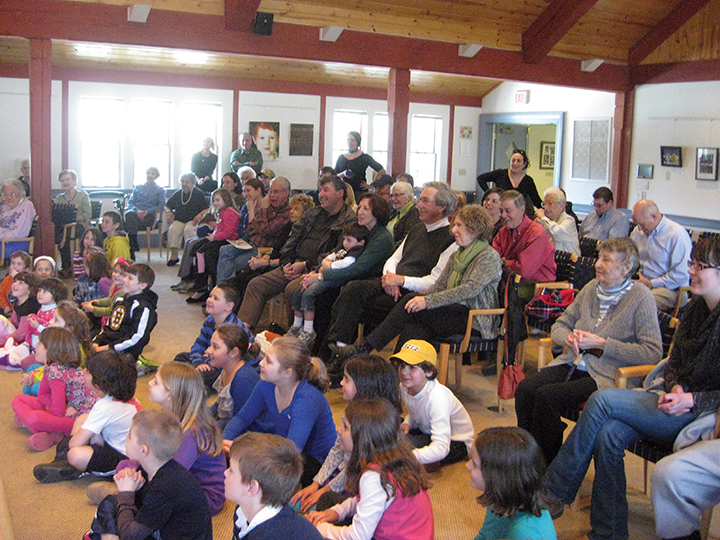
Although construction of the Scandinavian Living Center was completed way back in 2002, it has taken 14 years for its concept to come to full fruition.
The idea of patterning an assisted living facility in West Newton, MA, after long established traditions in Denmark, Norway and Sweden has finally reached the point that designer Joe Carella envisioned when he started the venture.
“I knew Scandinavia was good at eldercare, so I got a grant and researched how they did things over there,” he says. “What struck me was how connected they were to the community.”
The name could just as well be It Takes a Village. Though not a radical idea by any stretch, the 40-unit property operated by the Scandinavian Charitable Society of Greater Boston struck a chord with residents — one of wanting to belong to the community at large instead of being segregated from it. What that means is opening the facility up to the outside world, with office spaces for several local businesses, a performing arts center with a variety of events and a gym and walking track open to the public. It also means inviting 20 or 30 civic groups to hold events on site. In all, more than 20,000 people a year visit the facility for a wide variety of purposes, says Carella, who serves as executive director.
“I wanted to have groups coming in for events that take place naturally as they would in the community,” he says. “That is the connection that is necessary. That is where the magic happens. When you connect, the elderly share their ideas and wisdom.”
It has taken time for the neighborhood Carella to evolve into his vision — not because the residents weren’t on board with it, but because getting community members to change their perceptions of how an eldercare facility should operate has been a slow process. Overcoming conventions has been the main challenge, which Carella addresses at every opportunity.
“When I hired a cultural director, I told her to focus on programs that would attract the community, not the residents,” he says. “I didn’t want to limit her thinking on what programs to have.”
Carella admits that the neighbors were unsure about getting involved with the center “because of their institutional perceptions” about eldercare. Gradually, though, they have broken through those barriers. By opening up the gym to the public, a mother came in with her teenage boy for physical therapy and from that encounter, he has made progress.
“That is when we realized that we had something special — something powerful,” Carella says.
While the campus is welcoming and open, Carella insists that it does not come at the expense of resident safety. The key, he says, is for everyone to look out for each other.
“We have security here, but let’s face it — you and I aren’t safe in our own neighborhoods,” he says. “It’s about not isolating a population segment. They are ‘elders,’ not ‘seniors.’
“When you connect elders with the younger generation, you recreate the most important part of the neighborhood. Community-centered living is a difficult concept — it needs to be connected to the neighbors and you have to interact.”



